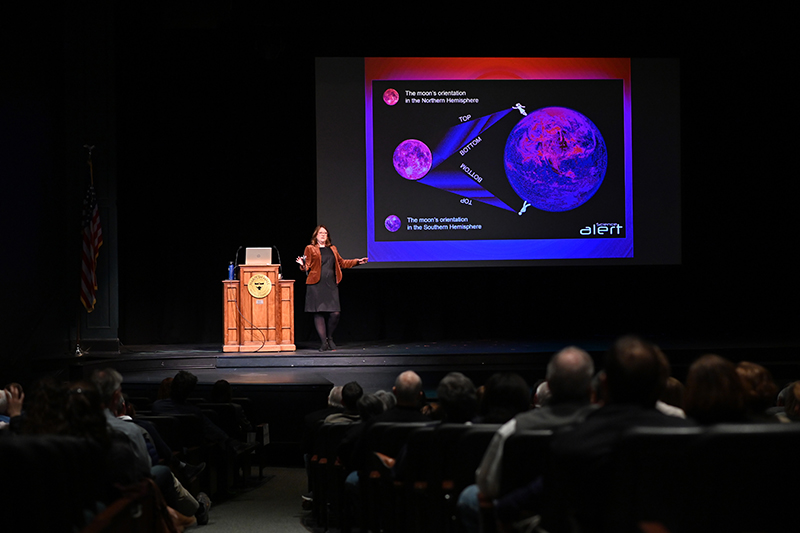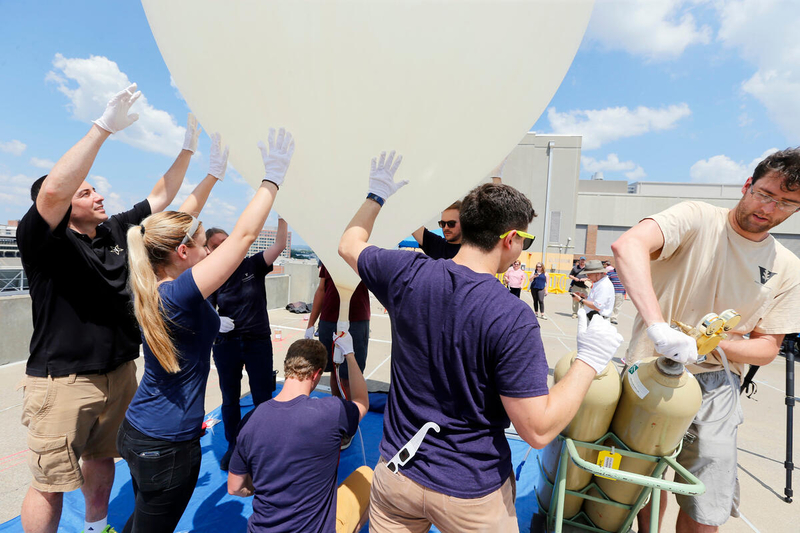The Power of Mentoring: Susan Gessner Stewart, BS’90

When Susan Gessner Stewart, BS’90, first came to the College of Arts and Science, her mind was firmly grounded on this planet—in the world of architecture, to be precise. Then a string of unexpected circumstances led her to the Department of Physics and Astronomy, where one professor’s mentoring changed the path of her life. Now an astronomer in celestial dynamics with the U.S. Naval Observatory and a part-time faculty member at Vanderbilt, she pays it forward by guiding the next generation of scientists.
Stewart grew up in Tampa, Florida, near Cape Canaveral and attended a competitive high school where she took advanced science and math classes. She found the space program interesting, but she came to Vanderbilt in the late 1980s hoping to become an architect. By her second semester, however, she had realized it was not the right path for her. She took an introductory astronomy class that same semester and decided to see if she could get some guidance from the professor, the late Doug Hall. A distinguished astronomer who made a number of key discoveries in his field, Hall had a reputation among both colleagues and students for being a generous and inclusive mentor and scientist.
“When I came into his office, he was working on this computer that looked like an Atari [gaming system]. He said, ‘Look what I’m working on—come see this!’,” Stewart said. Being part of a class with hundreds of students, she was surprised and encouraged by the fact that he remembered her and was so welcoming. She soon switched majors to Physics and Astronomy and joined Hall’s research group.

“I love research and working with data, and his mentoring was what showed me how to get from studying to career,” Stewart said. When it was time for her to graduate, Hall connected her with Susan Neff, an alumna who had been his first female graduate and who was the head of lunar and solar physics at NASA’s Goddard Spaceflight Center in Maryland. Hired to work on the Ultraviolet Imaging Telescope (UIT) based on the space shuttle, Stewart accomplished a string of firsts in her field: she was the first person to image a dwarf galaxy in the ultraviolet, the first to present photographic evidence that star formation propagates through galaxies in chain reaction events, and the first woman to earn a Ph.D. from her department at the University of Alabama. Her side training as a private pilot, combined with her work with the space shuttle, sparked an interest in navigation.
In 1997, Stewart joined the U.S. Naval Observatory (USNO) in Washington, D.C. There, she aids in the navigation of U.S. Navy ships through her research on celestial dynamics: the positions of the Moon and other bright celestial objects. She credits her undergraduate years at Vanderbilt with equipping her to excel at her work, which is highly collaborative. “Vanderbilt is a very connective and collaborative environment, so when I went out into industry, I knew the power of connecting with people and seeking opportunities for people to work together,” she said. Astronomers often work with colleagues in other countries to obtain the measurements they need, and Stewart helms four annual USNO publications that are produced in concert with the UK’s Royal Navy.

That spirit of collaboration, plus her memories of her mentor and professor Doug Hall, are what led her to accept an adjoint faculty appointment at Vanderbilt in 2013. Through this association, Stewart leads joint research collaborations between the USNO and the Department of Physics and Astronomy. She also helps train Navy ROTC students in celestial navigation and, through an additional Vanderbilt appointment as an adjunct, teaches one or two astronomy courses each year. In addition, she mentors about six students at a time, serving as a sounding board for their research, helping them solidify their career plans, and writing letters of recommendation to support their Ph.D. and job applications. She said that students continually impress her with their ingenuity in building interdisciplinary programs of study to satisfy their interests. That wide-ranging curiosity, and the supportive environment Vanderbilt provides for it, is like nothing Stewart has seen anywhere else. Ultimately, however, she most loves working with students because of what they teach her.
“It may sound corny, but the students are just inspiring. They remind me why I went into astronomy in the first place,” she said. “It keeps me excited to do what I do when I’m surrounded by students who are so eager to learn and to work with me. It keeps me very grounded in the field.”
